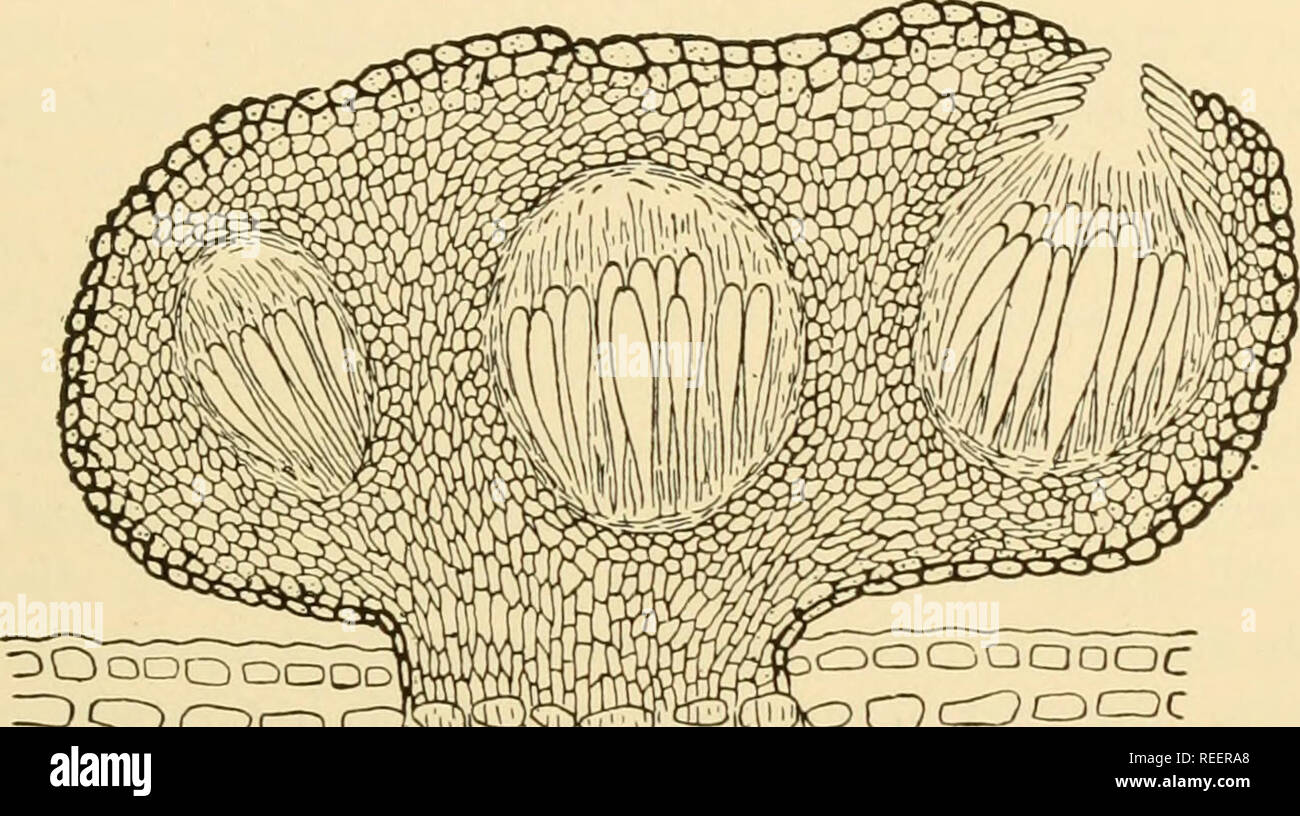. Comparative morphology of Fungi. Fungi. DOTHIDEALES 293 migrate from one cell to the other, unite there in pairs and enter the ascogenous hyphae. Meanwhile the cells of the top of this young meristem have flattened; they gradually thicken their walls, as happened earlier in the basal plectenchyma, and change into a cover layer. An interpretation of this life cycle is at present impossible, as Sys- tremma Ulmi is the only ontogenetically investigated species. It may be mentioned, however, that similar relations have been found in Epi- chloe Bambusae (Gaumann, 1927). One must regard the epheme

Image details
Contributor:
The Book Worm / Alamy Stock PhotoImage ID:
REERA8File size:
7.1 MB (434.2 KB Compressed download)Releases:
Model - no | Property - noDo I need a release?Dimensions:
2114 x 1182 px | 35.8 x 20 cm | 14.1 x 7.9 inches | 150dpiMore information:
This image is a public domain image, which means either that copyright has expired in the image or the copyright holder has waived their copyright. Alamy charges you a fee for access to the high resolution copy of the image.
This image could have imperfections as it’s either historical or reportage.
. Comparative morphology of Fungi. Fungi. DOTHIDEALES 293 migrate from one cell to the other, unite there in pairs and enter the ascogenous hyphae. Meanwhile the cells of the top of this young meristem have flattened; they gradually thicken their walls, as happened earlier in the basal plectenchyma, and change into a cover layer. An interpretation of this life cycle is at present impossible, as Sys- tremma Ulmi is the only ontogenetically investigated species. It may be mentioned, however, that similar relations have been found in Epi- chloe Bambusae (Gaumann, 1927). One must regard the ephemeral cell series as the remains of a solitary ascogonium in which, as in Poly stigma, parthenogamy occurs between two sexually activated cells. From the point of view of the morphology of fructifications, the differentiation of the stroma into a conidial ectostroma and ascigerous entostroma is characteristic for Systremma Ulmi; and furthermore the. OOODQOOOD coaoac ^ooodbDOGoD do oc Fig. 192.—Dothidella Derridis. Section of stroma. (After Theissen, 1914.) entostroma is first laid down as a hypodermal sterile basal stroma which only later develops fertile pads at the top. This budding of the ento- stroma is undoubtedly the same process as that which in the Myriangiales has led to the budding of the loculi. If one imagines that the fertile hyphae budding from the entostroma no longer unite into pads under the epidermis but emerge from the stomata singly or fasciculately and there intertwine to form a fertile tissue, one has the second tribe, the Leveillelleae. These possess an extensive sterile subepidermal basal stroma, which is connected by numerous hyphae or mycelial strands with the fertile extramatrical ascus stroma. In systematic literature the subepidermal basal stroma is usually called the hypostroma. This removal of the fertile ascus stroma from the interior of the leaf to the surface may be regarded as an expression of the asterinoid direction of development which we h